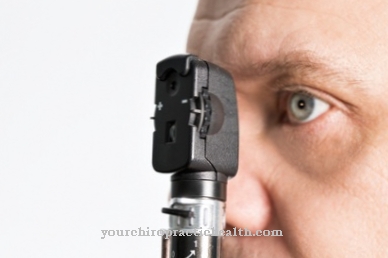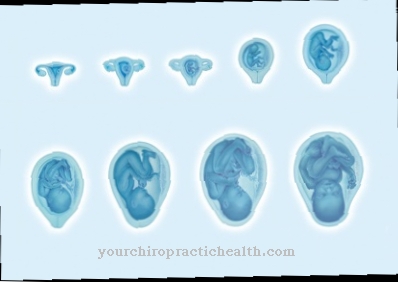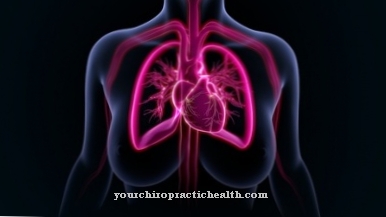Ideals of beauty are subject to social norms and are constantly changing. The attractiveness a person is explained on the one hand by the individual taste, but is also subject to fixed criteria.
What is the attractiveness?

The choice of partner is determined in many ways by characteristics of attractiveness. The attraction is subject to certain norms and is presumably partly due to biological criteria as well as social and individual ideas. The objectified attractiveness factor of male and female traits is influenced by the child scheme (cute effect). Further criteria are often symmetry and gender characteristics.
However, the ideals for judging beauty are changing and are determined by social norms. The measurements of attractiveness can therefore only relate to what we have largely learned to perceive as beautiful - because other cultures judge attractiveness according to different criteria.
Function & task
Beauty norms are not universal, they are different in every culture. The image of women in the Baroque was different from ours today. But there are consistently characteristics that almost everyone perceives as beautiful. So, to a certain extent, beauty is measurable.
Health is more attractive than illness, so beautiful people are also classified as healthier. In western civilization, beauty is equated with slimness and is a status symbol because it stands for wealth and education.
The evaluation of the female figure from a male point of view makes it clear that beauty criteria of a certain time can be measured. In the man's eye, the ratio of waist to hip and weight is crucial for feminine beauty. If the proportions are correct, this figure is perceived as attractive by the majority of the Western population. However - these are only average criteria that do not apply to the perception of all people.
Nevertheless, women and men value other attributes. For women, for example, the muscle percentage of the male body also plays a role, which is not so easy to measure from the outside. Presumably, these gender-specific attributes have also been learned and result from social ideas about the characteristics of men and women.
The attractiveness of the face is also measurable. This is how the average face is perceived as the most attractive. Average means that the face is neither very small nor large, has no flaws such as warts or protruding ears. The flawlessness signals health. Observers of such a face feel more comfortable. Women find these traits in other women just as attractive as men.
While the height of a woman is rather insignificant for her attractiveness, her age has a decisive role in the perception of beauty. Men of all ages find the average beauty twenty year old most attractive.
However, attractiveness does not only come from the face and physique. Posture can also have a decisive influence. If you stand crooked and move in an uncoordinated manner, you express less self-confidence, less physical awareness and ultimately less joy in life.
Character and love also influence the viewer's perspective on attractiveness. To measure this, researchers presented three photos of the respective partner in a study. The partner could then be seen in barely noticeably different beauty, as the photos had previously been slightly manipulated. The test subjects who lived in a happy relationship chose the most beautiful picture as the most realistic.
Other studies have shown that people who are ascribed positive traits also appear more attractive outwardly. These traits can be internal, such as humor, education, intelligence, caring, and warmth, or they can be external, such as fame, power, and money.
How much attractiveness can be detached from biological factors is shown by the result that thin women are considered beautiful today. From an evolutionary point of view, however, skinny women are at a disadvantage because they are less fertile and less able to survive.
You can find your medication here
➔ Medication for sleep disordersIllnesses & ailments
Since beautiful people also have it easier at work, the enormous influence of the cosmetics industry is easy to understand. The human preference for beautiful objects permeates all areas of life and all of human history. Cute objects are perceived as beautiful all over the world because they arouse protective instincts.
Ideals of beauty are also related to power structures. This is most evident in people who fall outside the grid of common ideals of beauty. Often they are exposed to discrimination due to external abnormalities. The mechanisms at work here are complex. Society provides a whole range of oppressive instruments such as sexism or racism.
People who find it difficult to differentiate between the sexes also experience discrimination on the basis of their bodies. However, their social acceptance is greater today than it was 30 years ago, which is also due to the fact that societies are beginning to assess the previously strict gender categories of men and women differently and to see them less in terms of delimitation.
How we perceive attractiveness also depends on our experiences in previous life and our current state of consciousness. An "ugly" person is more likely to be marginalized from society, which can also be accompanied by depression. It is more difficult for them to make friends and must compensate for their lack of attractiveness with other qualities. This requires a special expenditure of energy.
The less beautiful person has to show a whole series of characteristics in order for a potential partner to notice him or to fall in love with him. This feeling of being unattractive contains, among other things, great dangers for anorexia or bulimia, with which, for example, the particularly slim ideal of beauty is emulated.












.jpg)



.jpg)










.jpg)
